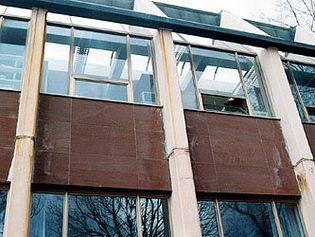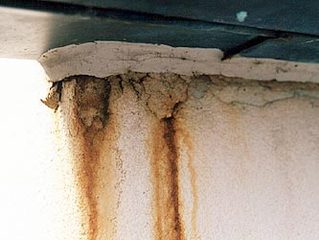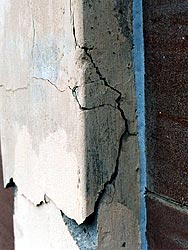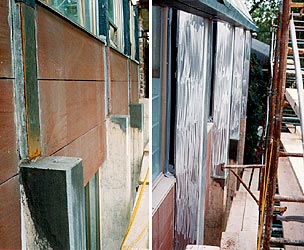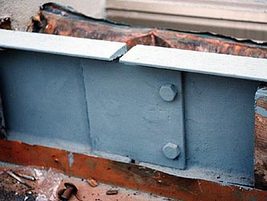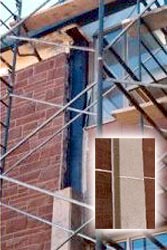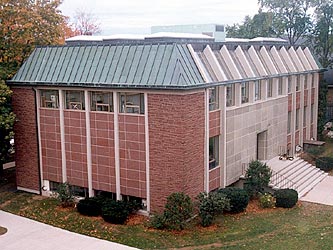Case Study #5
Restoration of a Fine Arts Faculty Building
|
Solution: PJ Materials Consultants was retained to carry out an investigation of the likely causes of the problem, to carry out a condition survey, and to devise a restoration strategy that would address the cause and result of the problem. The investigation revealed that the major cause of the problems was linked to inadequate movement accommodation between components of the building. |
|
All hard cement mortar was removed from the joints between sandstone cladding panels and these were then sealed with an elastomeric joint sealant, and poor waterproofing details were corrected - such as inadequately sloping window sills and missing flashings. Finally, the concrete components and the aluminum false work were coated with an elastomeric "breathable" waterproof coating. |

